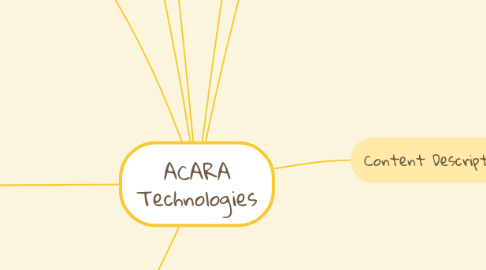
1. Rationale
1.1. Technologies enrich and impact on the lives of people and societies globally. Society needs enterprising students who can make discerning decisions about the development and use of technologies, develop solutions to complex challenges and contribute to sustainable patterns of living. Technologies can play an important role in transforming, restoring and sustaining societies and natural, managed and constructed environments.
2. Aims
2.1. OVERALL
2.1.1. The Western Australian Curriculum: Technologies aims to develop the knowledge, understandings and skills to ensure that, individually and collaboratively, students: investigate, design, plan, manage, create and evaluate solutions are creative, innovative and enterprising when using traditional, contemporary and emerging technologies, and understand how technologies have developed over time make informed and ethical decisions about the role, impact and use of technologies in the economy, environment and society for a sustainable future engage confidently with and responsibly select and manipulate appropriate technologies − materials, data, systems, components, tools and equipment − when designing and creating solutions critique, analyse and evaluate problems, needs or opportunities to identify and create solutions.
3. General Capabilities
3.1. Literacy
3.2. Numeracy
3.3. ICT capability
3.4. Critical and creative thinking
3.5. Personal and social capability
3.6. Ethical understanding
3.7. Intercultural understanding
4. Cross-Curricular Priorities
4.1. Aboriginal and Torres Strait Islander histories and cultures
4.2. Asia and Australia's engagement with Asia
4.3. Sustainability
5. Key Ideas
5.1. Overarching idea: Creating preferred futures
5.2. Project management
5.3. Thinking in Technologies
5.3.1. Systems thinking
5.3.2. Design thinking
5.3.3. Computational thinking
5.4. Information and communication technology in the Australian Curriculum
5.5. Safety
5.6. Animal ethics
6. strands
6.1. Design and Technologies
6.2. Digital Technologies
6.2.1. Processes and Production skills
6.2.2. Knowledge and Understanding
7. Bands
7.1. Foundation – Year 2
7.2. Years 3 and 4
7.3. Years 5 and 6
7.4. Years 7 and 8
7.5. Years 9 and 10
8. Content Descriptors
8.1. Digital Technologies
8.1.1. F-2
8.1.1.1. KNowledge and understanding
8.1.1.1.1. Recognise and explore digital systems (hardware and software
8.1.1.1.2. Recognise and explore patterns in data and represent data
8.1.1.2. Processing and Production skills
8.1.1.2.1. Collect, explore and sort data
8.1.1.2.2. Follow, describe and represent a sequence of steps
8.1.1.2.3. Explore how people safely use common information systems
8.1.1.2.4. Create and organise ideas and information using information systems
8.1.2. 3-4
8.1.2.1. Knowledge and understanding
8.1.2.1.1. Identify and explore a range of digital systems with peripheral devices
8.1.2.1.2. Recognise different types of data
8.1.2.2. Processing and Production skills
8.1.2.2.1. Collect, access and present different types of data
8.1.2.2.2. Define simple problems, and describe and follow a sequence of steps and decisions
8.1.2.2.3. Implement simple digital solutions as visual programs
8.1.2.2.4. Explain how student solutions and existing information systems meet common personal, school or community needs
8.1.2.2.5. Plan, create and communicate ideas and information
8.1.3. 5-6
8.1.3.1. Knowledge and Understanding
8.1.3.1.1. Examine the main components of common digital systems
8.1.3.1.2. Examine how whole numbers are used to represent all data in digital systems
8.1.3.2. Processing and Production Skills
8.1.3.2.1. Acquire, store and validate different types of data,
8.1.3.2.2. Define problems in terms of data and functional requirements
8.1.3.2.3. Design a user interface for a digital system
8.1.3.2.4. Design, modify and follow simple algorithms
8.1.3.2.5. Implement digital solutions as simple visual programs
8.1.3.2.6. Explain how student solutions and existing information systems are sustainable and meet current and future local community needs
8.1.3.2.7. Plan, create and communicate ideas and information
